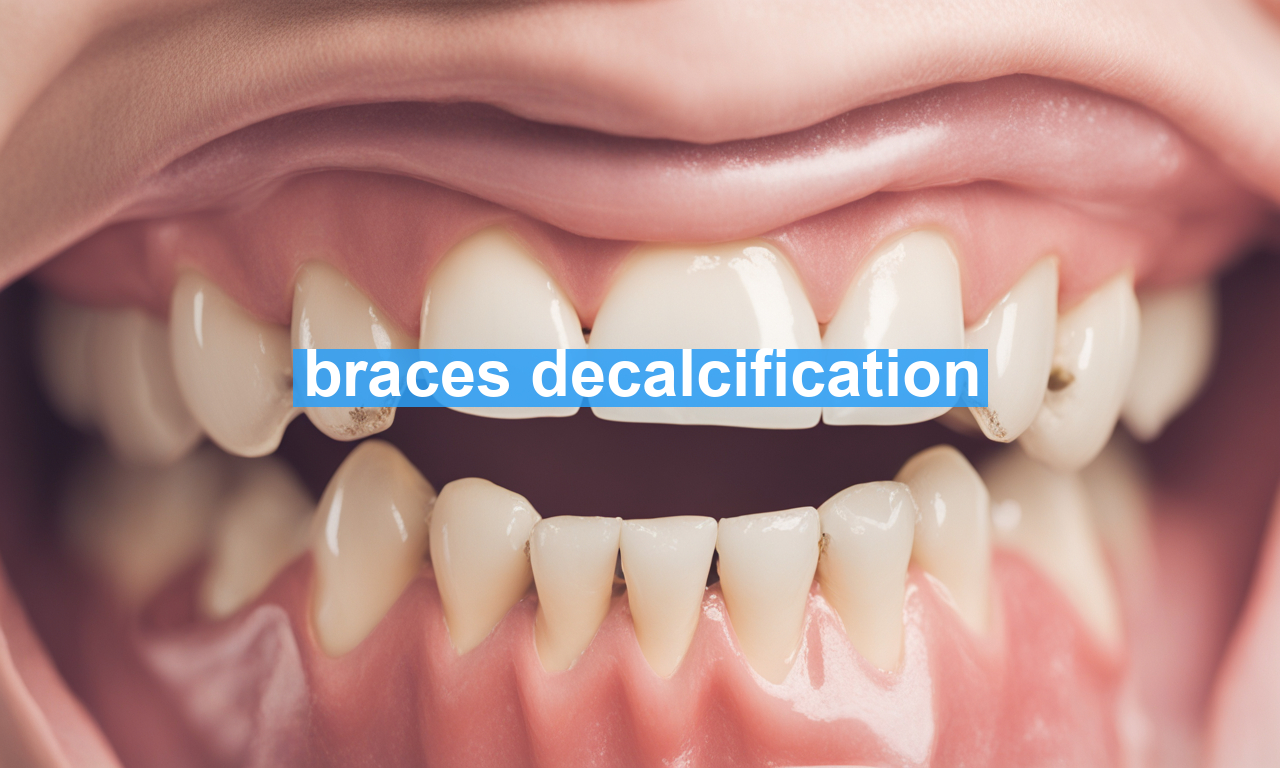Imagine this: You’ve just taken the plunge and gotten braces to achieve that picture-perfect smile you’ve always dreamed of. But here’s the twist—along with the journey to straighter teeth, there’s another crucial aspect that many forget about: ensuring your teeth stay healthy and strong. One of the common issues faced by those wearing braces is **decalcification**, a sneaky problem that can spoil your smile even before the braces come off. Don’t worry, we’ve got you covered with all the insights you need to keep these harmful effects at bay.
What is Decalcification?
Decalcification refers to the loss of calcium and other minerals from the enamel of your teeth. When this happens, it creates white spots, also known as white spot lesions, that often appear around the brackets of your braces. These spots are not just cosmetic blemishes; they are the early stages of tooth decay.
Why Does Decalcification Happen?
Decalcification often occurs due to:
– Poor oral hygiene: When food particles, plaque, and bacteria are not effectively removed, acids form on the teeth.
– Diet high in sugars and acids: Consuming too many sugary and acidic foods can accelerate the decalcification process.
– Braces hardware: Brackets and wires can make cleaning difficult, allowing plaque to build up around them.
How To Prevent Decalcification While Wearing Braces
Preventing decalcification is straightforward but requires a consistent effort. Here’s how you can keep your teeth healthy:
1. Meticulous Oral Hygiene
Brush your teeth thoroughly after every meal. Special orthodontic toothbrushes can help clean around the brackets and wires more effectively. Don’t forget to use fluoride toothpaste as it helps to strengthen the enamel and prevent demineralization.
2. Floss Daily
Flossing might seem cumbersome with braces, but it’s essential. Use floss threaders or orthodontic flossers to maneuver around the brackets and wires. This will remove plaque and food particles that your toothbrush might miss.
3. Use Fluoride Mouthwash
A fluoride mouthwash can offer an extra layer of protection. Rinse your mouth with a fluoride mouthwash every day to help remineralize any weak spots in the enamel.
4. Monitor Your Diet
Eating a balanced diet is crucial. Limit your intake of sugary snacks, sodas, and acidic foods. These can contribute to plaque buildup and the formation of acids that erode the enamel.
Dental Treatments for Decalcification
If you already have white spots, don’t despair! There are treatments available:
1. Professional Cleanings and Fluoride Treatments
Regular dental check-ups are vital. Your dentist can provide professional cleanings to remove any plaque that you might have missed. They might also apply fluoride treatments to help remineralize your teeth.
2. Microabrasion
This technique involves removing a small amount of enamel to eliminate the white spots. It’s a painless procedure that can make a dramatic difference in the appearance of your teeth.
3. Remineralization Products
Products containing hydroxyapatite or calcium phosphate can help restore mineral content to the enamel. Ask your orthodontist or dentist for recommendations on the best remineralization products to use.
The Role of the Orthodontist
Your orthodontist is your ally in preventing decalcification. They can provide you with personalized advice and tools to maintain excellent oral hygiene throughout your orthodontic treatment. Don’t hesitate to ask them for tips on the best brushing and flossing techniques, as well as which products to use.
Frequently Asked Questions
Can Decalcification Be Reversed?
Yes, if caught early, the process can often be reversed with proper oral care and fluoride treatments. However, the longer you wait, the harder it becomes to reverse the damage.
How Soon Can Decalcification Start After Getting Braces?
Decalcification can start as early as four weeks if proper oral hygiene isn’t maintained. This makes it crucial to start good practices as soon as you get your braces.
Will Decalcification Affect My Final Results?
Yes, it can. White spots from decalcification can detract from the appearance of your straightened teeth. In severe cases, untreated decalcification can lead to cavities, which might require more extensive dental work.
Conclusion
Decalcification is a preventable condition if you maintain impeccable oral hygiene and make wise dietary choices. By following the steps outlined above, you can keep your teeth strong and free of blemishes, ready to show off that new, beautiful smile once your braces come off. For more detailed information on maintaining oral hygiene with braces, check out these tips from the American Dental Association or learn more about fluoride treatments here.
By staying proactive, you can ensure that the payoff at the end of your orthodontic journey is nothing short of spectacular. Here’s to a future of perfectly aligned and healthy teeth!

